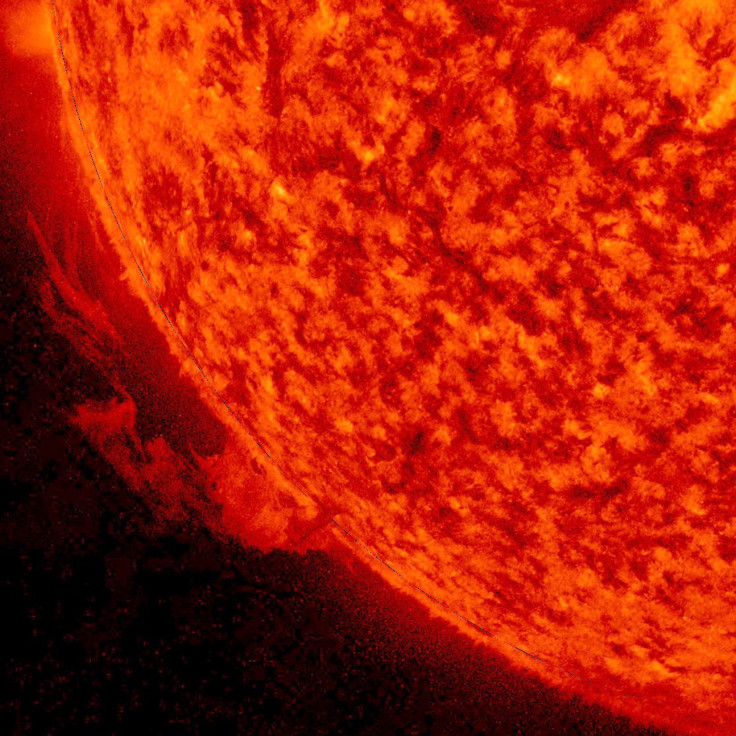NASA Captures Solar Prominence Unfurling From The Sun In New Video

NASA released a video Wednesday of a solar prominence captured by the Solar Dynamics Observatory (SDO). The cloud of solar material unfolded over the course of 17 hours before breaking away from the sun.
The solar prominence — a magnetically charged cloud of heated gas, known as plasma — erupted above the surface of the sun and was observed by the SDO on Feb. 3.
Solar prominences follow the sun’s magnetic field and can break off to form a coronal mass ejection (CME). No such event was observed in this instance. The charged plasma originates in the chromosphere, the second layer of the sun’s atmosphere, and can extend to the corona, the third and final layer.
Solar prominences are caused by the same magnetic forces that can lead to solar flares and CMEs, although how the phenomenon is formed remains unknown, according to NASA.
The sun has been quite active throughout the first half of the month. A minor geomagnetic storm on Feb. 3 was caused by a coronal hole high speed stream, a steady stream of charged gas that’s slower than a CME, according to the Space Weather Prediction Center of the National Oceanic and Atmospheric Administration’s National Weather Service. An M1 solar flare was observed Feb. 12. Solar flares are classified by their strength; X-class solar flares are the most powerful, followed by M-class and C-class flares. A CME associated with the solar flare led to a geomagnetic storm watch for Feb. 14 and 15.
Another coronal hole high speed stream caused a minor geomagnetic storm on Feb. 16. A geomagnetic storm can affect power systems, navigation systems and spacecraft operations. A minor (G1) geomagnetic storm can lead to increased aurora activity and small fluctuations in power grids. A moderate (G2) geomagnetic storm can force spacecraft to adjust course to avoid dangerous conditions.
The Space Weather Prediction Center issued a moderate geomagnetic storm warning due to the increased activity. A minor geomagnetic storm warning was extended until 4 p.m. EST Wednesday.
© Copyright IBTimes 2024. All rights reserved.












